To wrap up our deep dive into Southern Pacific’s Sacramento Shops, we’re posting some items that we have pictures of, but no plans: The privy, the water tower, the turntable, and the pitless transfer table.
Go Back To the Sacramento Shops main page
The Privy
The privy at Southern Pacific’s Sacramento Shops may be the only three-story sanitary station in existence. It’s one of the few buildings that has maintained its original purpose throughout the life of the building. Fixtures have been updated as technology required, details and exterior finish have changed, but the basic design and service of building remained unchanged for more than 125 years. [1]
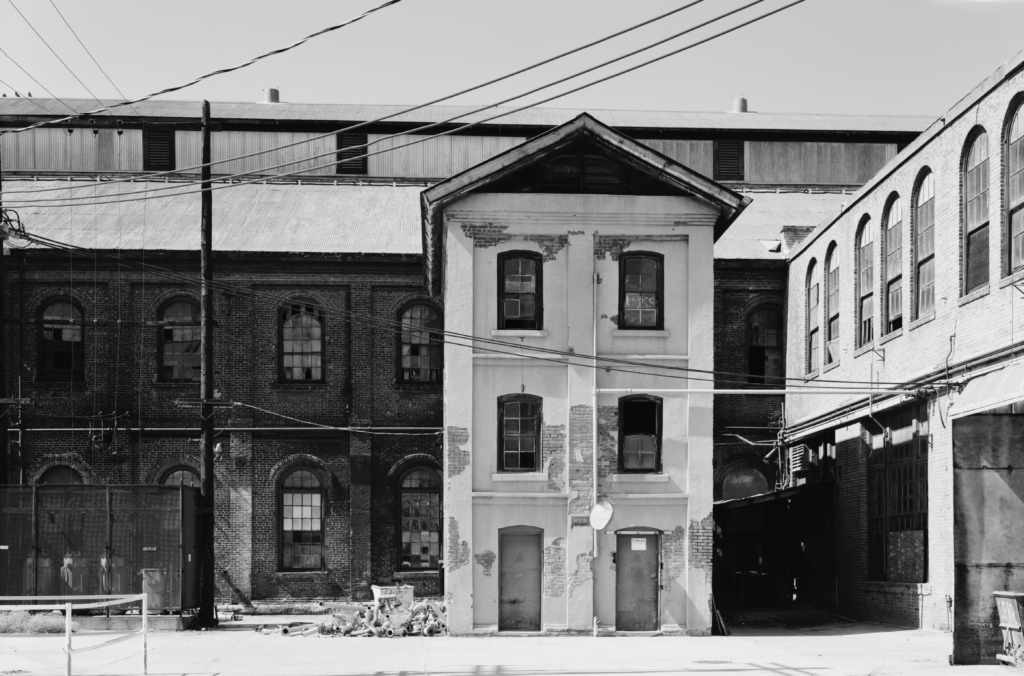
Built of brick in form similar to adjacent structures, the building measured 19 by 30 feet. While we have no individual plans of the building, it is included in drawings of the Planing Mill that could be used for detailed examination. [2] Like other early buildings on the site, it is built on a foundation of redwood grillage and rubble. The porous masonry walls were covered with stucco. One of its defining characteristics was a tall ventilation stack. Before running water was available the vent extended above the adjacent shops to carry foul odors away from them. As flush toilets were installed, the stack was removed.

All three floors had a similar layout: a seven foot high partition divided each floor into two rooms each with a row of nine toilets and a sink located against the partition. Most recently, the first floor had a pair of doors on the north and south ends of the building, upper floors only on the north end, with windows replacing the doors on the south end. The HAER report notes this layout doesn’t match a 1917 valuation report to the I.C.C., but the historian couldn’t find records of when the change was made. It seems the original layout had only three doors on the first floor: two on the north side and one on the south. Access to the second floor was through an exterior staircase to doors on the south side; third floor access was via a bridge from the Planing Mill’s second floor.
Water Tower
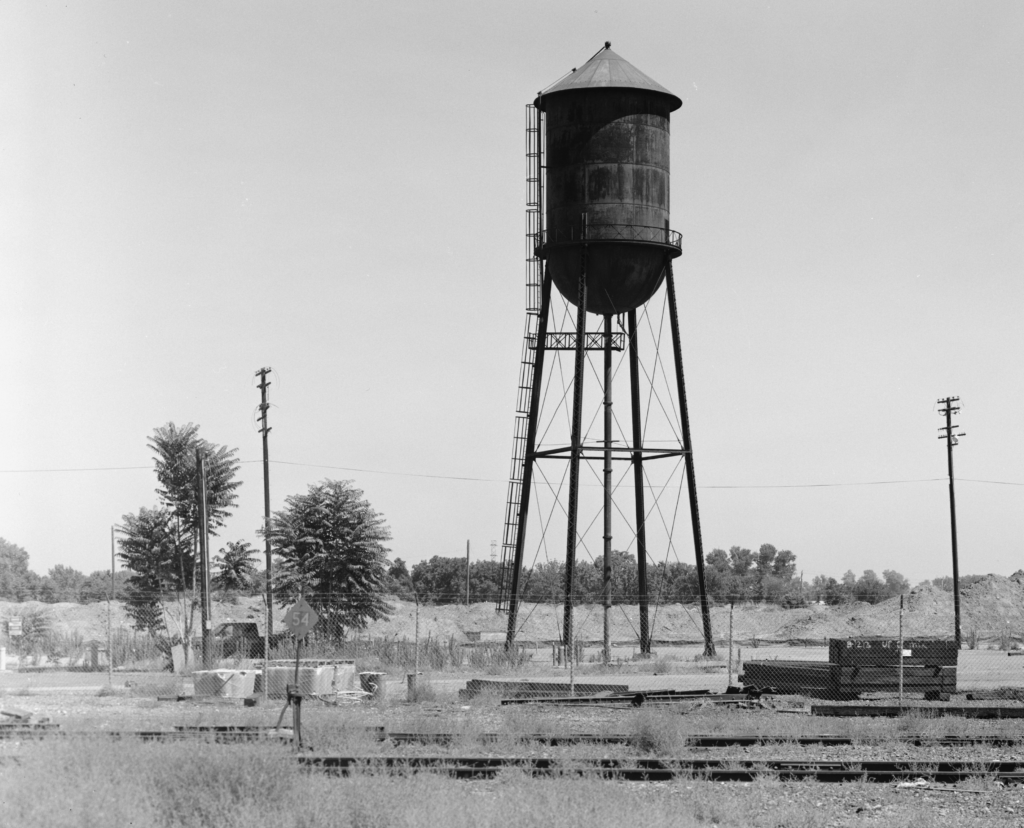
The HAER report offers no mention of the Sacramento Shops Water Tower, but from the photo you can see the riveted construction of both the truss legs and the water tank, The truss legs seem to be constructed with a flat plate on the back, with solid sides that are either a ‘C’ or ‘S; shape the photo doesn’t offer a detailed view, and a front made of narrow connecting plates riveted to the side plates forming right triangles. With it’s “Wizard of Oz” tin man top, this water tower screams 19th Century. Remove the safety cages for an accurate 1800’s model, or keep them and heavily weather the structure for a 20th Century model.
Turntable
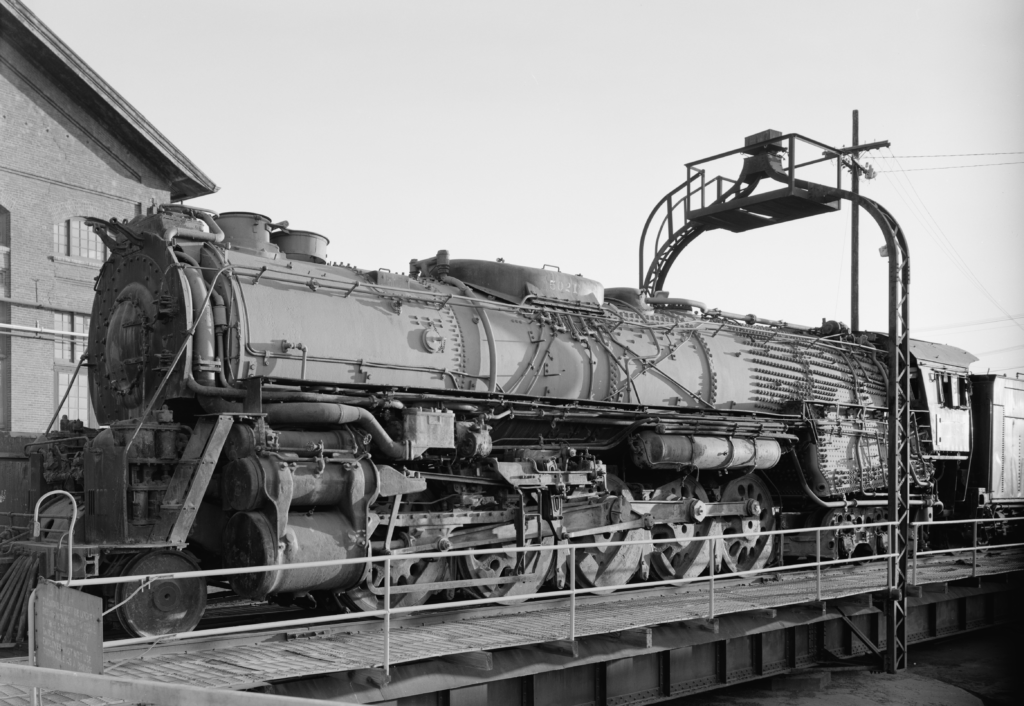
Because steam locomotives had to be “turned” for the return trip at the end of each journey, the Turntable at Southern Pacific’s Sacramento shops was among the first structures built. By 1869 a 55-foot diameter manually operated iron Sellers turntable served a 29-stall, 378 foot diameter brick Roundhouse. [3].
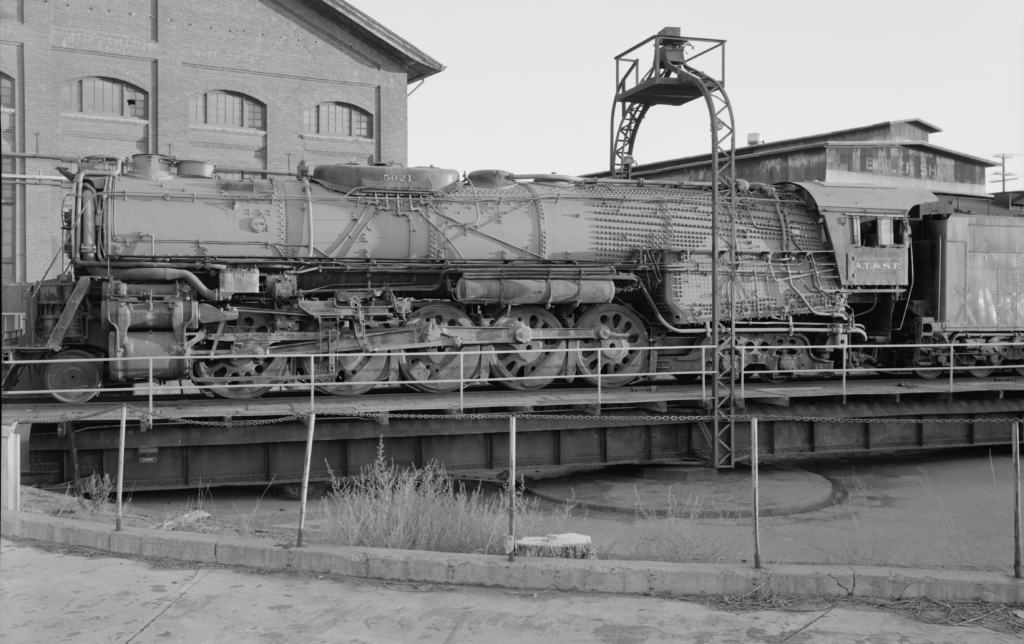
In addition to serving the roundhouse, other tracks radiated from the Turntable, offering fuel, water and sand facilities, and pits for running gear inspection. By 1920 the turntable had a lead that could route locomotives to the transfer table that was used to move locomotives between bays of the Machine Shop and Boiler Shop.
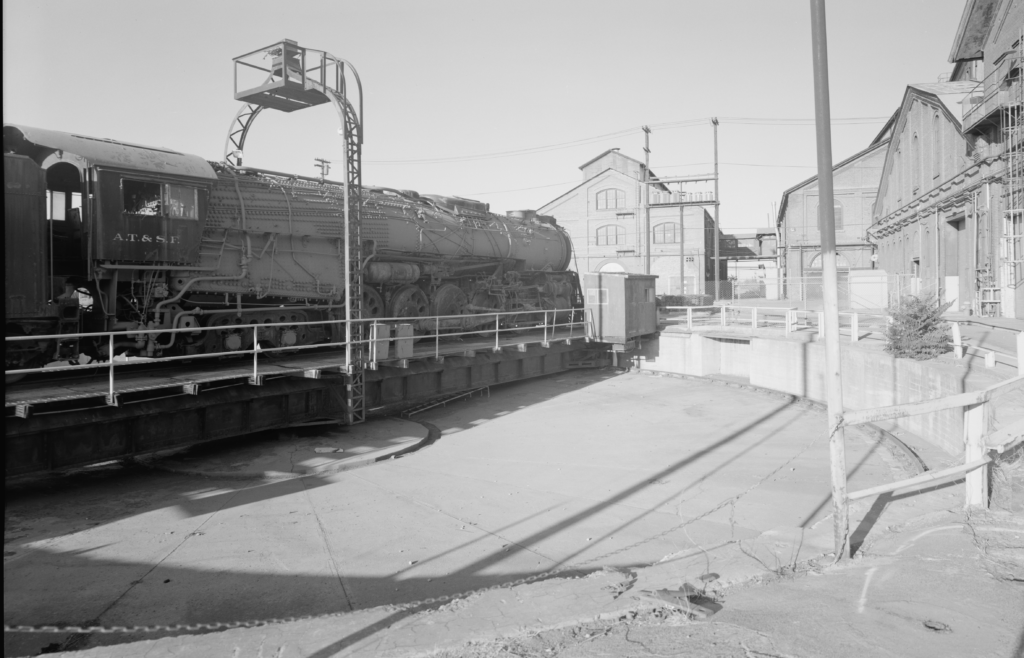
Over time the size and weight of steam locomotives increased necessitating enlargements of the turntable. In 1896 a 70 foot turntable was installed. At first the turntable was manually powered, but in 1897 a report on changes that would cut costs included adding an electric motor to power it, a change that was expected to cost $600 but had the potential to reduce costs by 75 percent. At the time the improvement couldn’t be completed because the electric company cut power between 1 a.m. and 5 a.m. It’s not clear when the switch to electric power finally took place [4]
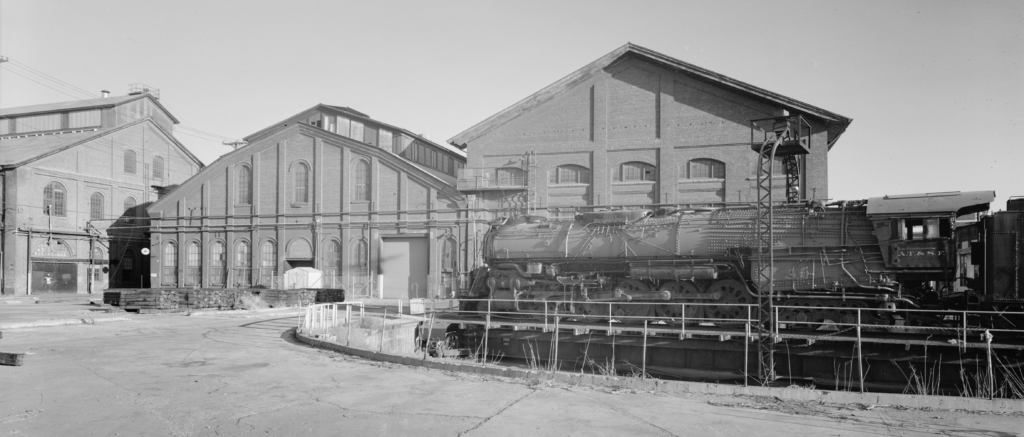
Even though most diesel locomotives ran in multiple unit lash-ups with a cab at each end, some turning of diesel locomotives was required, so the turntable remained in use throughout the diesel era. [5]
Pitless Transfer Table
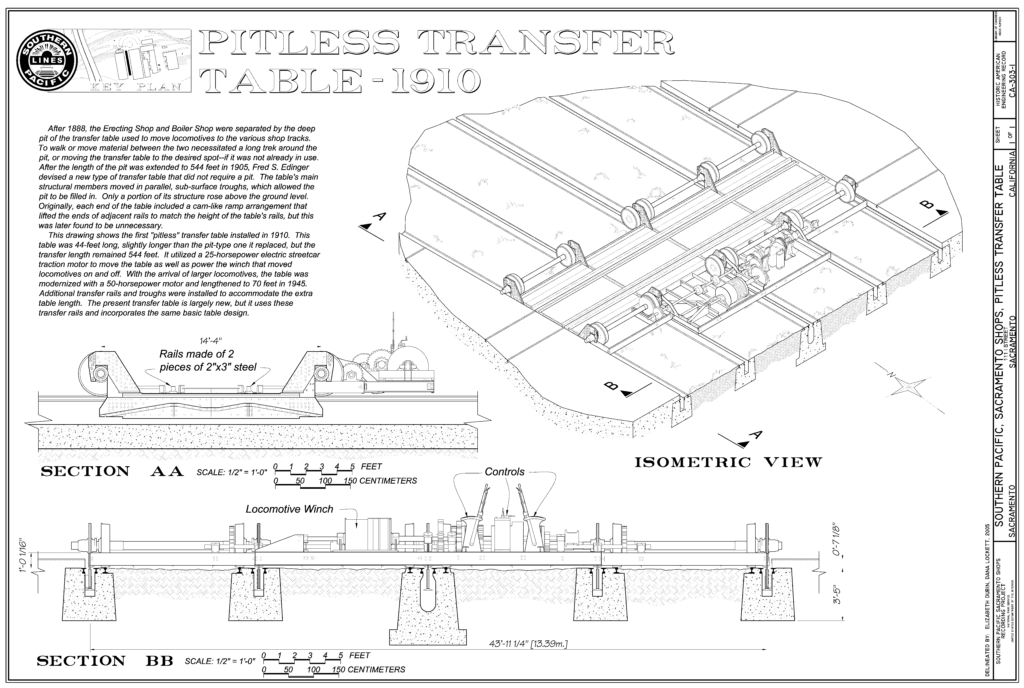
The first Transfer Table at Sacramento Shops “Called for … iron sills forty feet long, suitably braced with iron braces riveted together and supported on six pairs of wheels with three pairs front, three pairs rear.” It was powered by a two-cylinder steam engine and ran in a pit between the Erecting/Machine Shop and Boiler Shop. The table could move side to side with a total travel of 395 feet. [6]
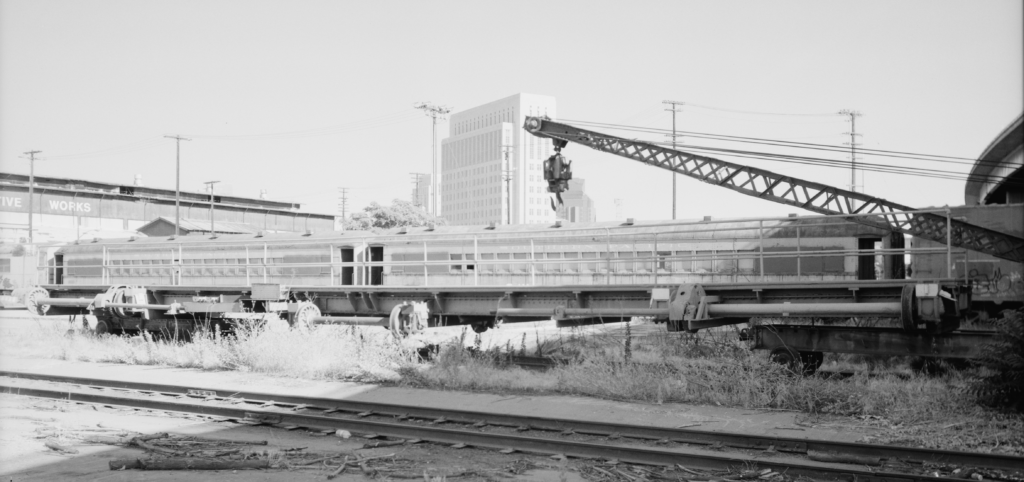
There were originally tracks leading to the Erecting/Machine Shop, but subsequent expansions led to the Transfer Table being the only access to the building. Access to the Transfer Table was available from tracks at either end of the pit, but expansions to the Boiler Shop eliminated access at the south end. [7]

Steam locomotives coming to the Boiler and Erecting/Machine Shops for heavy repair arrived ‘dead’ their fires quenched, their boilers drained. A small locomotive called a ‘goat’ shuttled the tender-less locomotive to the north end of the table, where it was then moved south to line up with tracks of the appropriate bay of the shop where repairs would be completed. The table was outfitted with a winch to move locomotives on and off the table, although winches in the shops sometimes supplemented this maneuver. [8]
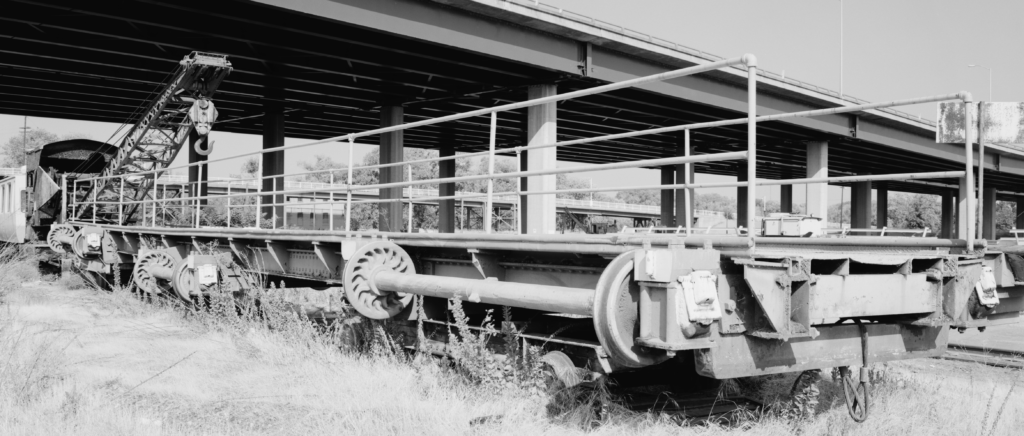
In 1905 the Transfer Table was converted to electric power using a 25 horsepower streetcar traction motor, and the pit was lengthened to 544 feet to access the additions to the Erecting/Machine Shop. [9]
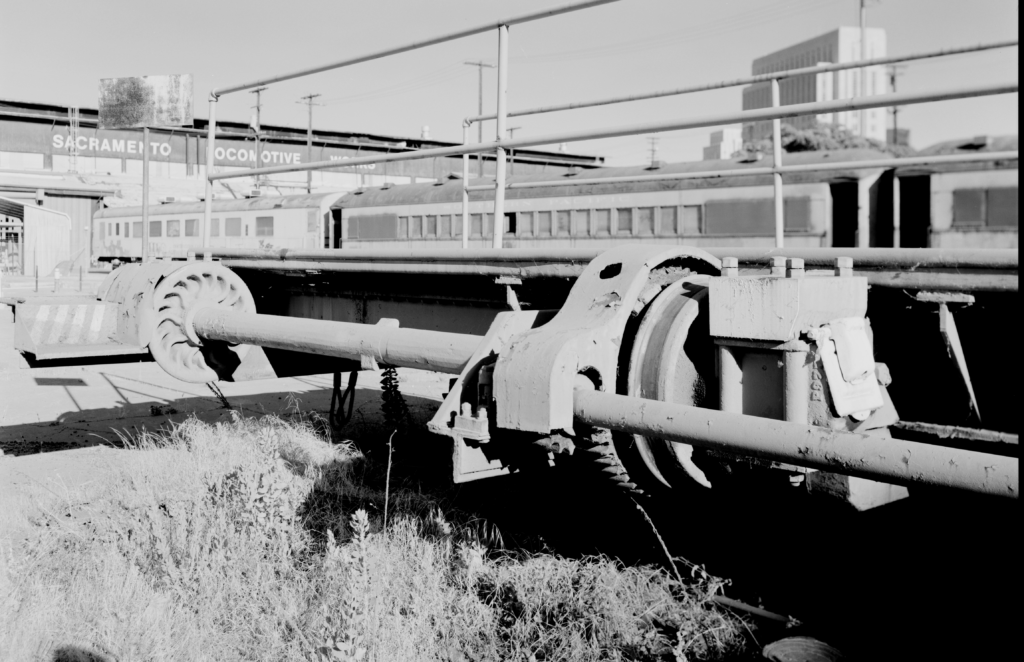
While the Transfer Table was a very efficient way to move locomotives as they progressed through the heavy repair process, unless the table was located nearby, the pit between the Machine Shop and the Boiler Shop forced workers moving between the two buildings to walk around it – which could be a substantial distance if you were going from the middle bays of one shop to the other – or jump down into the pit, cross, and climb back out on the other side, a very dangerous procedure.
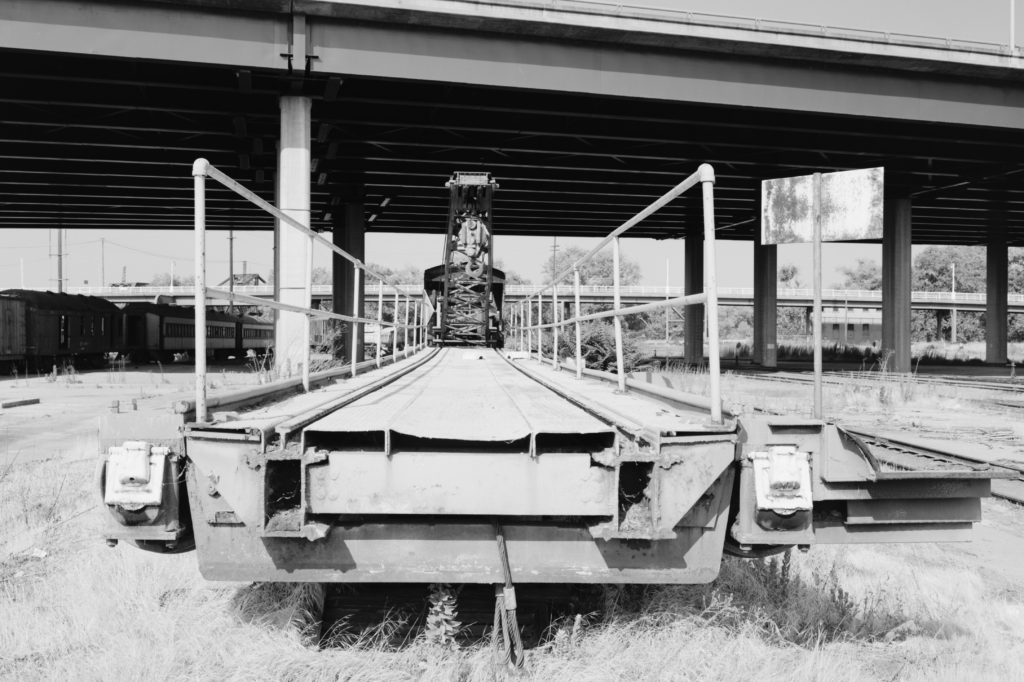
The solution implemented in 1910 was so innovative it earned the inventor a patent. The new design put the track on which the table ran in slots that were left open as the ground around them was filled in, leaving a smooth surface at ground level. The table was also increased in length to 44 feet.
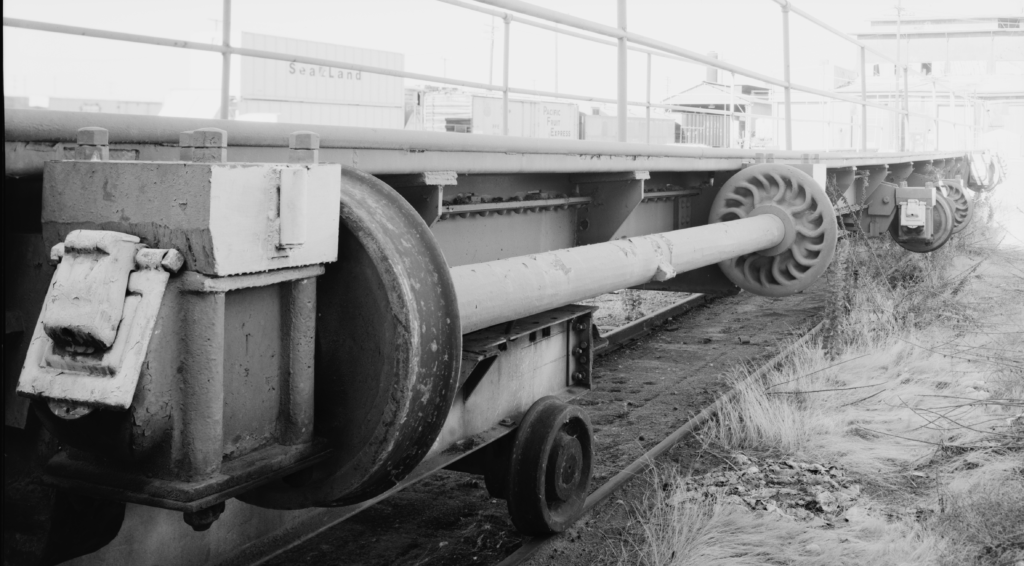
By 1945 locomotive sizes had increased drastically. The largest Southern Pacific motive power was articulated locomotives with two sets of eight driving wheels that had a wheelbase of more than 60 feet. Extensions on each end of the table lengthened it to 70 feet and new rails were added to support the additional length. A new 50 horsepower motor was also added to move the heavier weight. [10]
There was a second transfer table between Car Shop No. 3 and the Paint Shop in place by 1872 that was used to shuttle rolling stock from bay to bay. This table was horse-drawn until the turn of the century. This second table was originally 68 feet by 265 feet, however it was extended 23 feet in 1890-1892 to serve additional bays added to the Paint Shop. [11]
[1] Historic American Engineering Record Survey HAER CA-303 Written Historical and Descriptive Data pp. 122 – 125 https://tile.loc.gov/storage-services/master/pnp/habshaer/ca/ca3100/ca3107/data/ca3107data.pdf accessed 06/01/2021
[2] https://freemodelrailroadplans.com/buildings/maintenance-buildings/southern-pacific-sacramento-shops/southern-pacific-sacramento-shops-planing-mill/
[3] Historic American Engineering Record Survey HAER CA-303 Written Historical and Descriptive Data pp: 11 https://tile.loc.gov/storage-services/master/pnp/habshaer/ca/ca3100/ca3107/data/ca3107data.pdf accessed 06/01/2021
[4] Historic American Engineering Record Survey HAER CA-303 Written Historical and Descriptive Data pp: 42-43; 219; 16-17; 192 https://tile.loc.gov/storage-services/master/pnp/habshaer/ca/ca3100/ca3107/data/ca3107data.pdf accessed 06/01/2021
[5] ibid pp: 16
[6] ibid pp: 12
[7] ibid pp: 17-18
[8] ibid pp: 18-19
[9] ibid pp: 43
[10] ibid pp: 43-44
[11] ibid pp: 87-88; 107